Does and Don’ts: How to Recruit Employees and Stay Alive
In 2021’s last quarter, there were 140,000 vacant positions in the job market in Israel. That is double the number of jobs that were available a year before, by the end of 2020. Meaning, even when most of the Covid restrictions were lifted and there were no longer lockdowns — the trend of vacant positions only grew.
The raw data published by the Central Bureau of Statistics tells the story of our job market. For example, the field that saw the highest jump in vacant jobs (a 94% growth compared to 2021) is software development. In other words, after two years of a global, as well as domestic crisis, there are quite a few potential employees with a strong financial foundation that prefer to sit at home and wait. Wait for what? For the perfect fit for them.
And that is how the Hi-Tech job market underwent a major shift, from employers carefully picking out their ideal candidates, to the employees picking out their ideal workplaces, taking their time to think whether or not they feel like offering their services to a given company. Employers quickly understood what’s happening, and began using a variety of methods to tell a story about how unique their company is. They have to stick out from among the many competitors and find ways to draw employees to them. But what is the magic word that will draw people to work for you? What do you say that won’t sound ridiculous and won’t provide content for a satire episode of “Eretz Nehederet”?
1. Study the Demands of the New World
Abraham Maslow came up with his famous hierarchy of needs pyramid 80 years ago, but that doesn’t mean it’s no longer accurate to describe millennials and their younger siblings from Gen Z. But as a result of the pandemic, the past two years reshaped the pyramid of needs, and wise employers need to understand these changes and adapt to them.
A quick reminder: Maslow claimed that the human behaves according to a hierarchy of universal needs that can be divided into five categories: The human will only tend to higher needs after he or she has ensured their most basic needs. On the bottom of the pyramid are a person’s physical needs such as water, food, sleep etc’. Next in line are safety needs: personal security, employment, health, possessions. In the third level from the bottom, humans strive for a sense of love and belonging, intimacy and connection. The last two levels of gaining respect, recognition and esteem, can be explained as a desire to move up on the food chain and be considered better than others.
Today, some research claims that the top two levels, i.e. “Esteem” and “Self-actualization” have been strained and possibly even eradicated. Their explanation is that the wave of firing people and the lockdowns made people all over the world suddenly have to face threats to their most basic needs, which for a very long time were a given for much of the modern world.
Thus, In the updated, shorter version of the pyramid, “Love and belonging” become the highest priority. Others are of the opinion that the top levels of the hierarchy didn’t dissipate all together, but underwent a major change. According to this approach, the Self actualization at the top of the pyramid is less concerned with promotion and gaining power within an organization, but rather with creativity. These changes have practical manifestations: employers can and should position their organization as a workplace in which everyone feels that they belong, that they are loved and that they are creative.
2. Figure Out Your Values
But for real, without being cynical and not only because it appears in the company’s HR policy. Values that will be actualized and won’t be limited to a mandatory staff training that your HR team imposes on the sour employees. Figure out what it is you sincerely believe in and make sure those values can be widely and systematically implemented, for example: Equal pay, equal representation of women in management roles, reducing your carbon imprint — goals such as these can, and should be exclaimed and implemented. Remember the “belonging” from the previous clause? This is precisely how you create a sense of belonging for your employees.
3. Try not to look like a parody
It’s not that we have a disregard for money, God forbid! Some of our best friends are dollar bills. But when observing the recruitment process of potential employees, offering piles of money no longer seems to be *the* issue. In a market that is desperately competing over employees, everyone playing the game knows that they need to offer high wages. So too is the case regarding the decadent wealth of Hi-Tech workers that has since become the norm. Prepaid lunch cards? That sounds excessive and unhealthy. Silver colored leased saloon car? That’s polluting. I’ll take a scooter and an office in midtown instead. Frequent flyer? Sounds hellish. Isn’t that what Zoom was made for?
Don’t offer your employees gadgets and perks that any one of your competitors is offering them too. Employee benefits that once rocked our world, are now old news. A colorful waterslide in the middle of the open space, a “chillout room with beanbags where you can come up with creative ideas”, a famous chef cooking Stir Fry — been there, done that, it was exciting, but that was 15 years ago. Yesterday's hype is today’s awkward nostalgia. It’s not that you shouldn’t give your workers goodies and gadgets; just don’t present it as the cutting-edge benefits of the brave new world, it just won’t fly.
4. Don’t Ruin Your Reputation
There is a myth going around in Israel about Hi-Tech, in which it’s presented as the new frontier; it’s a Wild West composed of Alpha Males riding off into the sunset with their millions, uninhibited and ruthless. This myth is further accentuated around recruitment campaigns and becomes purely decadent. Directors should not be giving the impression that they’re promoting a toxic work environment, enabling sexual harassment and sexual predators. But they also shouldn’t be relaying the message that all that poisonous jazz is simply a reflection of their employees’ “creative thinking” and “free spirit”. At the end of the day, someone has got to do the work, and a Hooters-like atmosphere is not going to give the impression to potential employees that the work is getting done. Are you sure that despicable moral behavior is what they’re looking for? And it's not only your potential employees that we’re talking about. Your clients — what kind of impression will they get?
5. Adopt journalistic standards
Your story can be told in an authentic manner, it doesn’t have to be genetically modified. How so? Let the stories of what people are up to at work, including their creative and ethical ideas, build up from top to bottom. Operate like a press agency: assign designated people with the task of collecting the strongest and most positive stories about the company. Have them solidify the stories, make them accessible and heard. Don’t cut any corners on the production, interviewing, photography, editing and writing. Think of the story you tell about your organization as if you were being interviewed by a super-professional magazine. Only now, you’re the magazine. It’s not only about tweaking around the edges. It’s also about having a real connection to the subjects of your story (yes, you got it right, this is alluding to the “Love and belonging” from Maslow’s pyramid)
And if you still haven’t figured out what we mean by this, consider a stock image of “people working in an office”. Isn’t that generic, ridiculous and esthetically cringy? Then creating something that is the exact opposite of that.

